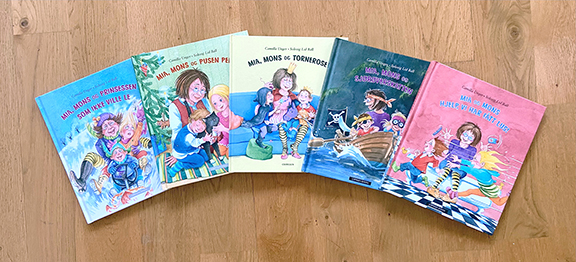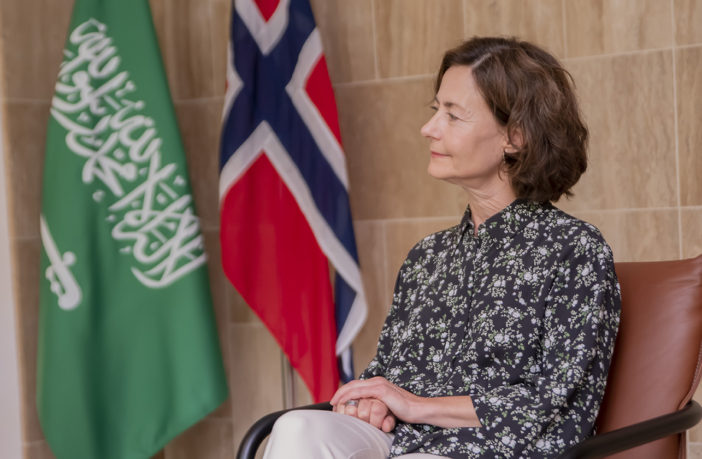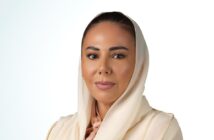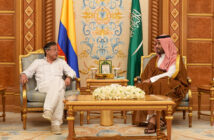A discussion with the Norwegian writer and author of children’s books
Camilla Unger, a Norwegian children’s book writer in DQ, launched a mission of writing children’s books that fascinated readers with educating, charming, humorous, and uplifting narratives and illustrations. As a result of positive reviews, Camilla has released a series of books about Mia and Mons adventures. In recent years, Mrs. Unger has been working on a fantasy novel.
Mrs. Unger holds a Master’s Degree in Literature and has also worked within book publishing. An inspiration of writing books came as an opportunity during her travels. In addition, for the last seven years, Mrs. Unger has been working at the National arena that mainly focuses on folk music and folk dance in Oslo.
Camilla Unger, as the wife of the Norwegian Ambassador H.E. Thomas Lid Ball, recently arrived in Saudi Arabia, where she aspires to find new venues of inspiration to write. Mrs. Unger also anticipates collaborating with Saudi musicians in folk music performances common for Saudi and Norwegian cultures.
As a child, what was your favorite book or story? Why?
I read a lot as a child and often went to the library to get more books. Astrid Lindgren was one of my favorite authors and there are especially two books that had a big impact on me when I was younger: Mio my Mio and The Brothers Lionheart. Two other books that also meant a lot to me are Erik Linklater’s The Wind on the Moon and Richard Adams’s Watership Down. Both are a mix of fantasy, the fantastic and reality. I like to think that there is a lot of that mix in the real world as well. However, sometimes we must look a little bit harder to see and realize that it is to be found in real life as well, because it is not as obvious as in the stories.
What makes you passionate and inspired about writing children’s books? What kind of truths… If any have you uncovered for yourself while writing for children and would like to pass the next generation?
The five books I have written are about a grandmother and her two grandchildren, Mia and Mons. The stories revolve around the relationship between the three of them. And this is a grandmother with a lot of funny ideas and who loves to play. All five books include small adventures and two of the books are slightly based on old fairy tales.
My stories are about how meeting a grandmother is like going on a different kind of journey and therefore other things will happen. A grandmother does not have to be responsible for good behavior, upbringing and going to bed at the right time. She can move a little bit outside the box – so to speak. I also write my books so that they will be easy to read out loud.
When and how was the idea revealed of writing a book series dedicated to Mia and her adventures? What inspired you?
I always wanted to write books for children. When my husband got posted at the embassy in Pretoria, I was happy to move. This gave me the opportunity to see if I could manage to write a good story. My first and foremost inspiration are my children, so I decided to write a story about two siblings at the same age as my own children. I gave them the names Mia and Mons. The kindergarten that both my children went to was also an inspiration. So, I decided that the first story would play out exactly there. Parts of the first book happened for real. Of course, not in the same dramatic way.

Children are often fascinated by the pictures. Can you discuss and share the importance of illustrations in your books as a means of interaction between stories, pictures, and children?
After I finished my first text, me and my publisher started to discuss who could be a good match to illustrate my books. There are so many different styles and one of my favorite illustrators happens to be my own sister-in-law, Solveig Lid Ball. Solveig is a storyteller with her pictures and manages with her illustrations to put more layers into a story. We must remember that children only hear the stories read out loud. And they will make the story out of what they hear and what they at the same time see in the pictures. The interaction between the story and the text is therefore more than important. And the details will give the children the chance of hearing the same story repeatedly – the repetition that children love – but at the same the story will appear a little bit different.
How do you ensure that the stories you are writing make a difference?
I do not think my stories will make a difference in the traditional meaning of the world. What is important to me is to show that there is a little bit of magic in life as it is. And that we all can be a part of making that magic. I also want to show how important it is for different ages and generations to play together, and that playing is an essential part of communicating with children.
You have been traveling and recently arrived in Saudi Arabia, how does the newness affect your writing? How do you envision your activity as an author in Saudi Arabia?
Right now, I am writing a fantasy novel that I have been working on for some time. This is a novel of around 250 pages, and in that sense something totally different from what I am used to, but this story also has a mix between fantasy and the regular world that we live in. When I am done with this story, I hope to go back to write a new book about Mia and Mons. There I will have the opportunity to use some of my new experiences from Saudi Arabia. Maybe I can send Mia and Mons on a vacation with the whole family, and here they can go for a sightseeing in the desert? This could make an exciting beginning of many different adventures.
In addition to writing books, you have worked at a folk music concert scene. How do you plan to use this experience in Saudi Arabia?
The last seven years I have been working at the National arena/scene that stages mainly folk music and folk dance in Oslo. Folk music and folk dance are widespread in Norway and have roots that go way back. I understand that there is also a tradition for folk music here in Saudi Arabia as well. For example, Oud is an instrument that we have in common. I am hoping we can arrange for some folk musicians to come over, maybe for our national day to preform, show what our folk music is all about. After all, folk music is also all about storytelling.




